Companion planting is the practice of growing different plants together so that they can help each other grow better, stay healthy, and produce higher yields. It's an age-old technique that farmers and gardeners have been using for centuries. The idea behind companion planting is that certain plants have natural properties that can benefit their neighbors when grown in close proximity. For example, some plants have insect-repelling properties that can protect neighboring plants from pests. Other plants have deep root systems that can help break up hard soil and provide nutrients to other plants. By using companion planting, growers can create a more balanced and sustainable garden ecosystem, with less reliance on synthetic fertilizers and pesticides.
Asparagus
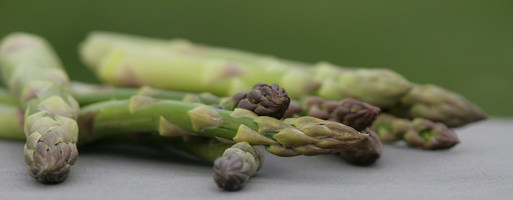
While most asparagus patches grow fine without companion plants, there are some varieties that will help combat pests. Do not plant the companion plants until you've harvested the asparagus for the spring. Plant garlic and chives 12 inches away, all others should be 24 inches away.
- Parsley - repels asparagus beetles, a common pest of asparagus.
- Basil - helps to repel pests and improve the flavor of asparagus.
- Nasturtium - repels aphids, whiteflies, and other pests, and attracts beneficial insects such as ladybugs and lacewings. We recommend the vining varieties. Nasturtiums will not overwinter, making it a perfect companion plant for the asparagus patch.
- Marigold - repels nematodes and other pests and attracts beneficial insects such as ladybugs and lacewings.
- Garlic - repels pests and improves the flavor of asparagus.
- Chives - repel aphids, whiteflies, and other pests, and improve the flavor of asparagus.
- Sage - repels pests and improves the flavor of asparagus.
- Rosemary - repels pests and improves the flavor of asparagus.
Beans
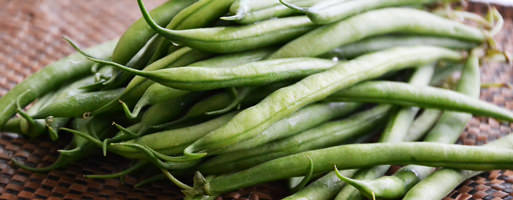
Grow these four companion plants with your beans. Carrots, radishes, and beets should be planted at least 8 inches away from bean plants. Keep marigold 12 inches away.
- Marigolds - repel harmful pests and attract beneficial insects.
- Carrots - do not compete for light, water, or nutrients and will improve soil health.
- Radish - attracts pollinators and deters harmful pests.
- Beets - do not compete for light, water, or nutrients and improve soil health.
Beets
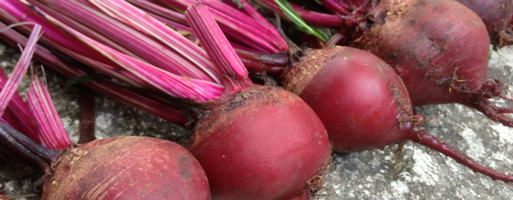
Try these six companion plants to benefit your beets. Carrots, radishes, and garlic should be planted at least 8 inches away from beet plants, while lettuce, onions, and kohlrabi should be 12 inches away.
- Lettuce - provides shade to the soil and cools the air, which helps the beet plants.
- Onions - deter harmful pests and improve soil health.
- Garlic - deters harmful pests and improves soil health.
- Carrots - do not compete for light, water, or nutrients and improve soil health.
- Radishes - attract pollinators and deter harmful pests.
- Kohlrabi - grows well with beets and does not compete for the same nutrients.
Broccoli
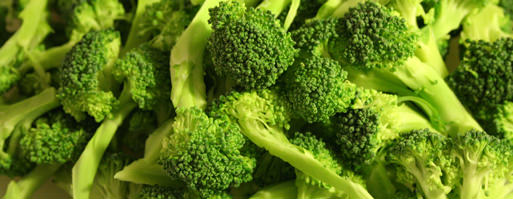
These four companion plants produce the most benefit for broccoli. Onions and beets should be planted at least 8 inches away from broccoli plants, all others should be planted 24 inches away for the broccoli.
- Onions - deter harmful pests and improve soil health.
- Lettuce - provides shade to the soil and cools the air, helping the broccoli plants.
- Rosemary - repels pests and improves the flavor of broccoli.
- Beets - do not compete for light, water, or nutrients and improve soil health.
Brussels Sprouts
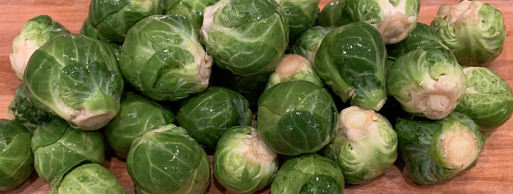
These four companion plants produce the most benefit for Brussels sprouts. Onions and beets should be planted at least 12 inches away, all others should be planted 24 inches away.
- Onions - deter harmful pests and improve soil health.
- Lettuce - provides shade to the soil and cools the air, benefiting the broccoli.
- Rosemary - repels pests and improves the flavor
- Beets - do not compete for light, water, or nutrients and improve soil health.
Cabbage
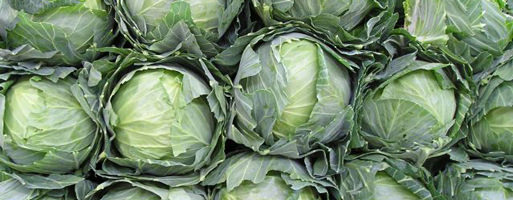
These four companion plants produce the most benefit for cabbage. Onions and beets should be planted at least 8 inches away from cabbage plants, all others should be planted 24 inches away.
- Onions - deter harmful pests and improve soil health.
- Lettuce - provides shade to the soil and cools the air, benefiting the broccoli.
- Rosemary - repels pests and improves the flavor.
- Beets - do not compete for light, water, or nutrients and improve soil health.
Cantaloupe
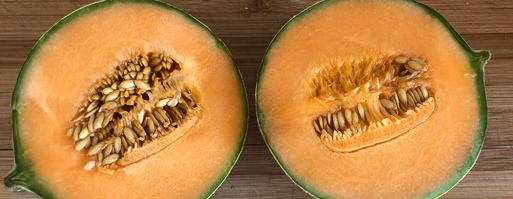
These Six companion plants are beneficial for cantaloupe. Yearly crop rotation is also helpful. However, do not plant where any other melon, squash, or cucumbers were at the previous year. Radish and onion should be planted at least 12 inches away, all others should be planted 24 inches away.
- Radish - deters the dreaded squash vine borer moth. Six radishes spaced around the plant are preferred. Do not harvest the radishes, let them go to seed.
- Mint - deters the squash vine borers. One plant is enough.
- Onion -deters the squash vine borers. Four onions spaced around the plant are preferred.
- Sweet Corn - prevents the wilt virus. Cantaloupe should be planted within the sweet corn rows.
- Marigolds - repel harmful pests, like cucumber beetles, and attract beneficial insects.
- Nasturtium - repels harmful pests, like cucumber beetles, and attracts beneficial insects.
Carrot

These three companion plants are beneficial for carrots. Onions and chives should be planted at least 8 inches away from carrot plants, while lettuce and rosemary should be 24 inches away.
- Chives - repel aphids, which can damage the carrots.
- Lettuce - provides shade for the carrots, which helps to keep their roots cool.
- Onions - deter the carrot fly pest.
- Rosemary - repels the carrot fly and improves the health of the soil.
Cauliflower
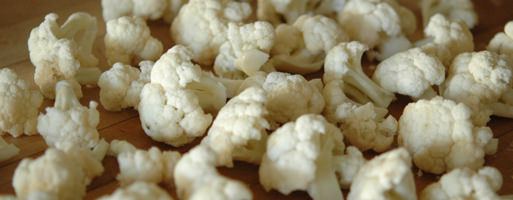
These four companion plants produce the most benefit for cauliflower. Onions and beets should be planted at least 8 inches away from cauliflower plants, all others should be planted 24 inches away.
- Onions - deter harmful pests and improve soil health.
- Lettuce - provides shade to the soil and cools the air, benefiting the broccoli.
- Rosemary - repels pests and improves the flavor
- Beets - do not compete for light, water, or nutrients and improve soil health.
Celery
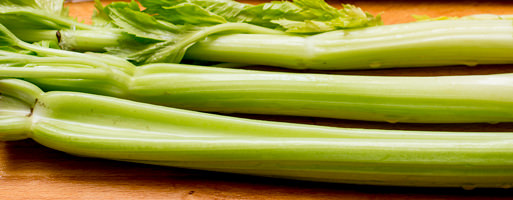
These three companion plants help your celery. Onions and leeks should be planted at least 8 inches away from celery plants, while marigolds should be planted 24 inches away.
- Leeks - improve the growth of celery and repel pests.
- Chives - repel aphids and improves the flavor of celery.
- Marigolds - release a chemical that repels harmful insects and nematodes.
Collards

These five companion plants produce the most benefit for collards. Onions and beets should be planted at least 12 inches away from collard plants, all others should be planted 24 inches away.
- Onions - deter harmful pests and improve soil health.
- Lettuce - provides shade to the soil and cools the air, benefiting the broccoli.
- Rosemary - repels pests and improves the flavor
- Beets - do not compete for light, water, or nutrients and improve soil health.
- Tomatoes - significantly reduce the flea beetle pest.
Cucumber
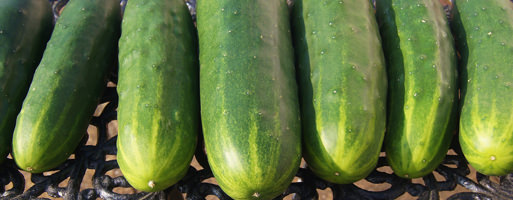
7 companion plants are beneficial for cucumbers. Yearly crop rotation is also helpful. However, do not plant where any other melon, squash, or cucumbers were at the previous year. Radish and onion should be planted at least 12 inches away, all others should be planted 24 inches away.
- Radish - deters the dreaded squash vine borer moth. Six radishes spaced around the plant are preferred. Do not harvest the radishes, let them go to seed.
- Mint - deters the squash vine borers. One plant is enough.
- Onion - deters the squash vine borers. Four onions spaced around the plant are preferred.
- Sweet Corn - is said to help prevent the wilt virus. Cucumbers should be planted within the sweet corn rows.
- Marigolds - repel harmful pests, like cucumber beetles, and attract beneficial insects.
- Nasturtium - repels harmful pests, like cucumber beetles, and attracts beneficial insects.
- Dill - attracts beneficial insects and improves the growth and flavor of cucumbers.
Eggplant

These two companion plants produce the most benefit for eggplants. Both should be planted at least 12 inches away from the eggplant.
- Green Beans - help repel the Colorado potato beetle.
- Hot Peppers - both plants can benefit from each other by improving pollination and controlling pests.
Garlic
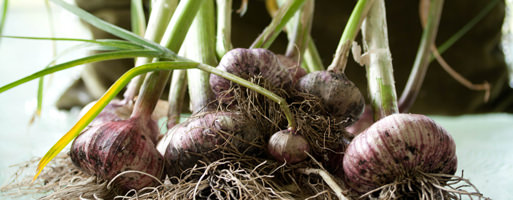
These three companion plants produce the most benefit for garlic. All should be planted at least 12 inches away form the plant.
- Peas and beans - help to fix nitrogen in the soil, which can improve the growth of garlic.
- Sage - improves the flavor of garlic and can also help to deter pests like carrot flies and onion maggots.
Gourds
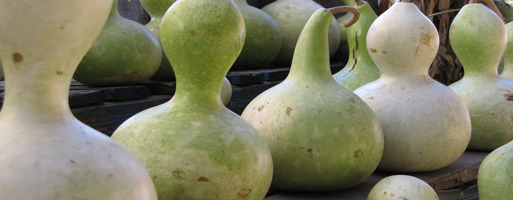
These six companion plants are beneficial for gourds. Yearly crop rotation is also helpful. However, do not plant where any other melon, squash, gourds, or cucumbers were at the previous year. Radish and onion should be planted at least 12 inches away, all others should be planted 24 inches away.
- Radish - deters the dreaded squash vine borer moth. Six radishes spaced around the plant are preferred. Do not harvest the radishes, let them go to seed.
- Mint - deters the squash vine borers. One plant is enough.
- Onion - deters the squash vine borers. Four onions spaced around the plant are preferred.
- Sweet Corn - helps prevent the wilt virus. Gourds should be planted within the sweet corn rows.
- Marigolds - repel harmful pests, like cucumber beetles, and attract beneficial insects.
- Nasturtium - repels harmful pests, like cucumber beetles, and attracts beneficial insects.
Kale

These four companion plants are the most beneficial for kale. Garlic and beets should be planted at least 12 inches away, all others should be at least 20 inches away.
- Garlic - helps deter pests like aphids.
- Cabbage - improves the growth and flavor of kale.
- Beets - improve the growth and flavor, and beets can also help to deter pests like aphids and leaf miners.
- Nasturtiums - deter pests like aphids and caterpillars from kale and improve soil health. Use the bush type.
Kohlrabi

These three companion plants are the most beneficial for kohlrabi. Carrots and beets should be planted at least 12 inches away, while sweet alyssum should be at least 20 inches away.
- Carrots - carrots and kohlrabi enhance each other's growth and flavor, and the carrots can also help to deter pests like aphids and cutworms.
- Beets - enhance the flavor and deter pests like aphids and leaf miners.
- Sweet Alyssum - attracts the hoverfly, which in turn gets rid of aphids.
Lettuce
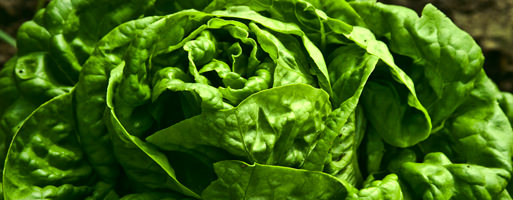
These five companion plants are the most beneficial for lettuce. Carrots, beets, and onions should be planted at least 12 inches away, while herbs and nasturtiums should be at least 24 inches away.
- Carrots - carrots and lettuce enhance each other's growth and flavor, and the carrots can also help to deter pests like aphids and cutworms.
- Radishes - radishes and lettuce are often grown together because they have similar growing requirements and can benefit from each other's growth and pest-deterring properties.
- Herbs - certain herbs like dill, basil, and cilantro can improve the flavor of lettuce while also helping to deter pests like aphids and slugs.
- Nasturtiums - help to deter pests like aphids and caterpillars from lettuce and improve soil health. Use the bush type.
- Onions - help to repel rabbits.
Okra
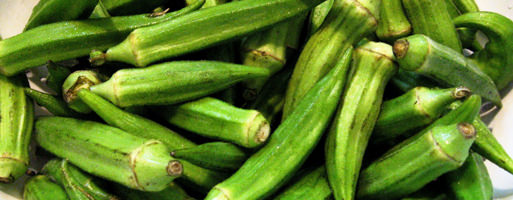
These four companion plants are the most beneficial for okra. All plants should be planted no closer than 24 inches.
- Peppers - Peppers are heavy drinkers just like okra and they help keep the cabbage worms away.
- Eggplants - eggplants and okra are often grown together because they have similar growing requirements and can benefit from each other's growth and pest-deterring properties.
- Marigolds - deter pests like root-knot nematodes and improve soil health.
- Basil - the strong scent repels pests.
Onions
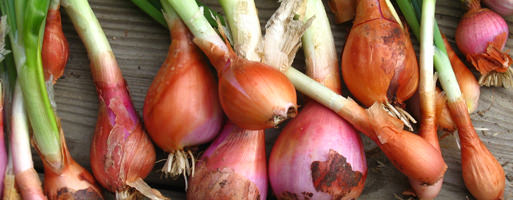
These companion plants are most beneficial for onions. Carrots can be planted 12 inches away while all other plants should be planted no closer than 24 inches.
- Carrots - carrots and onions enhance each other's growth and flavor, and carrots can also help to deter pests.
- Beets - beets and onions enhance each other's growth and flavor, and the beets can also help to deter pests like aphids and leaf miners.
- Lettuce - lettuce and onions are often grown together because they have similar growing requirements and can benefit from each other's growth and pest-deterring properties.
Peas

These companion plants are most beneficial for peas. Carrots and turnips should be planted at least 12 inches away, while all other plants should be planted no closer than 24 inches.
- Lettuce - peas and lettuce are often grown together because they have similar growing requirements and can benefit from each other's growth and pest-deterring properties.
- Carrots - carrots and peas enhance each other's growth and flavor, and the carrots can also help to deter pests like cutworms.
- Radishes - radishes and peas are often grown together because they have similar growing requirements and can benefit from each other's growth and pest-deterring properties.
- Potatoes - potatoes and peas are often grown together because they have similar growing requirements and can benefit from each other's growth and pest-deterring properties.
- Turnips - turnips and peas are often grown together because they have similar growing requirements and can benefit from each other's growth and pest-deterring properties.
Peppers

These five companion plants are most beneficial for peppers. All plants can be grown at least 15 inches away from each other.
- Basil - repels pests and enhances the flavor of peppers.
- Marigold - repels nematodes and other pests, while also attracting beneficial insects.
- Rosemary - repels pests and improves the flavor of peppers.
- Chives - repel aphids, whiteflies, and other pests, and improve the flavor of peppers.
- Garlic - has antiseptic properties and repels pests and fungi.
Potatoes
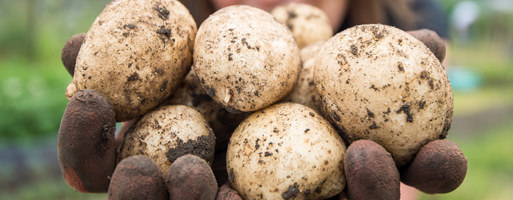
These four companion plants are most beneficial for potatoes. All plants should be planted no closer than 24 inches.
- Beans - beans and potatoes are often grown together because they have similar growing requirements and can benefit from each other's growth and pest-deterring properties.
- Corn - corn and potatoes are often grown together because they have similar growing requirements and can benefit from each other's growth and pest-deterring properties.
- Brassica family plants (e.g. broccoli, cauliflower, Brussels sprouts) - they are members of the same family as onions and can improve each other's growth and flavor.
- Marigolds - deter pests like nematodes and improves soil health.
Pumpkin
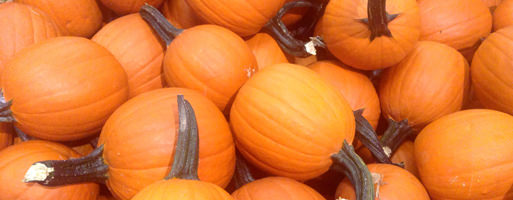
These six companion plants are beneficial for pumpkins. Bear in mind that yearly crop rotation is also helpful: do not plant where any other pumpkins, melon, squash, gourds, or cucumbers were at the previous year. Radish and onion should be planted at least 12 inches away, all others should be planted 24 inches away.
- Radish - deters the dreaded squash vine borer moth. Six radishes spaced around the plant are preferred. Do not harvest the radishes, let them go to seed.
- Mint - deters the squash vine borers. One plant is enough.
- Onion - deters the squash vine borers. Four onions spaced around the plant are preferred.
- Sweet Corn - is said to help prevent the wilt virus. Pumpkins should be planted within the sweet corn rows.
- Marigolds - repel harmful pests, like cucumber beetles, and attract beneficial insects.
- Nasturtium - repels harmful pests, like cucumber beetles, and attracts beneficial insects.
Radish
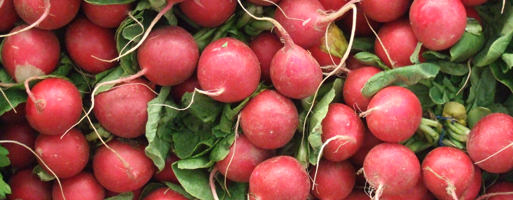
These five companion plants are most beneficial for radish. Carrots should be planted at least 12 inches away. All other plants should be planted no closer than 24 inches.
- Lettuce - lettuce and radishes are often grown together because they have similar growing requirements and can benefit from each other's growth and pest-deterring properties.
- Carrots - carrots and radishes are often grown together because they have similar growing requirements and can benefit from each other's growth and pest-deterring properties.
- Peas - peas and radishes are often grown together because they have similar growing requirements and can benefit from each other's growth and pest-deterring properties.
- Spinach - spinach and radishes are often grown together because they have similar growing requirements and can benefit from each other's growth and pest-deterring properties.
- Cucumbers - cucumbers and radishes are often grown together because they have similar growing requirements and can benefit from each other's growth and pest-deterring properties.
Spinach
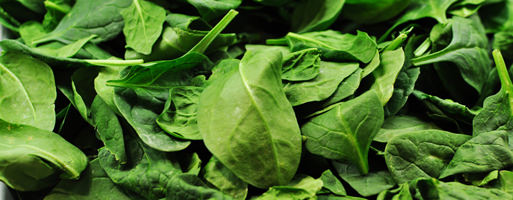
These four companion plants are most beneficial for spinach. Carrots, radishes, and beets should be planted at least 12 inches away. Lettuce should be planted no closer than 24 inches.
- Lettuce - lettuce and spinach are often grown together because they have similar growing requirements and can benefit from each other's growth and pest-deterring properties.
- Radishes - radishes and spinach are often grown together because they have similar growing requirements and can benefit from each other's growth and pest-deterring properties.
- Carrots - carrots and spinach are often grown together because they have similar growing requirements and can benefit from each other's growth and pest-deterring properties.
- Beets - beets and spinach are often grown together because they have similar growing requirements and can benefit from each other's growth and pest-deterring properties.
Squash
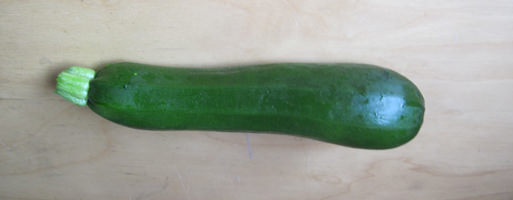
These six companion plants are most beneficial for squash. Yearly crop rotation is also helpful. However, do not plant where any other cucumbers, pumpkins, melons, gourds, or squash were the previous year. Radish and onion should be planted at least 12 inches away, all others should be planted 24 inches away.
- Radish - deters the dreaded squash vine borer moth. Six radishes spaced around the plant are preferred. Do not harvest them, let them go to seed.
- Mint -deters the squash vine borers. One plant is enough.
- Onion - deters the squash vine borers. Four onions spaced around the plant are preferred.
- Sweet Corn - is said to help prevent the wilt virus. Squash should be planted within the sweet corn rows.
- Marigolds - repel harmful pests, like cucumber beetles, and attract beneficial insects.
- Nasturtium - repels harmful pests, like cucumber beetles, and attracts beneficial insects.
Strawberries

These four companion plants are most beneficial for strawberries. All plants should be grown no closer than 24 inches.
- Spinach - spinach offers similar growing requirements and produces saponin, which has antifungal and antibacterial properties.
- Nasturtiums - deter pests and improve growth.
- Garlic - deters pests and improves growth.
- Onions - deters many different garden pests.
Sweet Corn
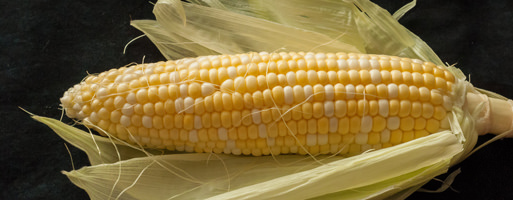
These six companion plants are most beneficial for sweet corn. All plants should be grown in the rows between the cornstalks.
- Beans - beans and corn are often grown together because they have similar growing requirements and can benefit from each other's growth and pest-deterring properties. Beans can also fix nitrogen in the soil, which can help to improve the growth of corn. Try using pole beans.
- Squash - squash has similar growing requirements and deters raccoons from entering the corn patch.
- Marigolds - deter pests and improve growth.
- Cucumbers - cucumbers have similar growing requirements and deter raccoons from entering the corn patch.
- Sunflowers - sunflowers have similar growing requirements and offer pest-deterring properties.
- Melons - melons have similar growing requirements and deter raccoons from entering the corn patch.
Tomato
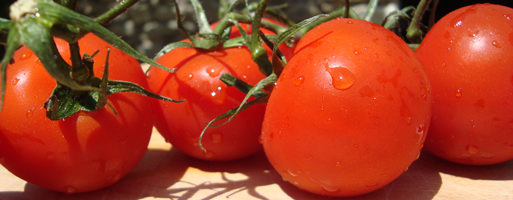
These four companion plants are most beneficial for tomatoes. Chives and garlic can be grown at least 12 inches away from the plant, all others should be planted at least 24 inches away.
- Chives - repel aphids, whiteflies, and other pests, and improve the flavor of tomatoes.
- Garlic - repels pests and improves the flavor of tomatoes.
- Sage - repels pests and improves the flavor of tomatoes.
- Sweet Alyssum - attracts the braconid wasp, which in turn kills tomato hornworms.
Turnips

These two companion plants are most beneficial for turnips. All plants can be grown at least 12 inches away from each other.
- Radishes - radishes and turnips have similar growing requirements and can benefit from each other's growth and pest-deterring properties.
- Peas - improve growth and deter pests.
Watermelon
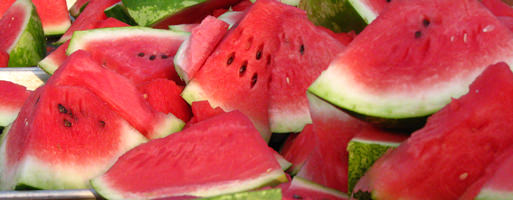
Yearly crop rotation is also helpful: do not plant where any other cucumbers, pumpkins, melons, gourds, or squash were at the previous year. Radish and onion should be planted at least 12 inches away, all others should be planted 24 inches away.
- Radish - deters the dreaded squash vine borer moth. Six radishes spaced around the plant are preferred. Do not harvest them, let them go to seed.
- Mint -deters the squash vine borers. One plant is enough.
- Onion - deters the squash vine borers. Four onions spaced around the plant are preferred.
- Sweet Corn - is said to help prevent the wilt virus. Watermelon should be planted within the sweet corn rows.
- Marigolds - repel harmful pests, like cucumber beetles, and attract beneficial insects.
- Nasturtium - repels harmful pests, like cucumber beetles, and attracts beneficial insects.
The age-old art of companion planting has proven time and time again that some plants are just 'better together'. So don't wait! Use this effective method for improving the productivity of your vegetable garden. And let's not forget that by forgoing the use of pesticides in your garden you also create a thriving ecosystem that promotes growth, pest control, and soil health.





























































































































































































































































































































































































































































































































































































































































